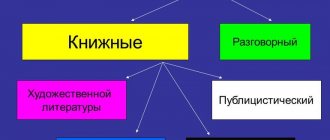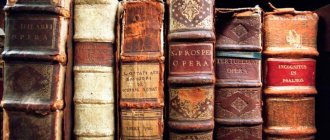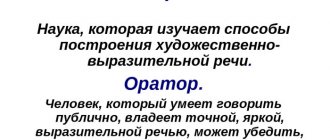The concept of journalism, according to the media dictionary of A. A. Knyazev, means a genre, “the specificity of which is the response to current socially significant processes and problems through their documentary display, ideological and political comprehension and emotional and artistic assessment.”
Further, the researcher closely connects journalism with political activity, bearing in mind its social aspect. From this we can conclude that the basis of a journalistic text is an incident from social life, generalized to a socially significant phenomenon. Analysis and generalization are similar to journalism and analytics, but it is distinguished by the bright civic position of the author.
History of origin
The history of journalism dates back to the times of the Ancient World. The prototype is the oratory of Ancient Greece and Rome. The performances included techniques from rhetoric, acting and psychology. The goal was a detailed analysis of the problem and convincing the audience.
The same features were expressed in the genre of sermon, which was the forerunner of journalism in the Middle Ages. Publicism can also be called works on religious topics that had an educational and moralizing function. However, the real journalistic genre appeared during the Renaissance. It was a pamphlet - an accusatory work on social issues. It was from this time that journalism was based on cases from social life.
- Russian journalism originated in Kievan Rus (“Teachings of Vladimir Monomakh”, “Domostroy”, “The Lay of Igor’s Host”, “The Lay of the Destruction of the Russian Land”). Old Russian literature was more journalistic than fiction, as it served as the author’s emotional response to social events.
- The development of journalism continued in the 18th century. This time was filled with various events: reforms of Peter I, Catherine II, wars, peasant riots. The authors wrote on the topic of the peasant question (M. M. Shcherbatov - against liberation, A. N. Radishchev, A. P. Sumarokov, F. Prokopovich - for it), and also created anti-clerical (F. Prokopovich) and liberal (N. I. Novikov) works. Read more…
- The 19th century is the golden age of journalism in Russia. The main problems of that period were the oppression of peasants and abuses of power at all levels. The leading names of the beginning of the century are M. P. Pogodin, S. P. Shevyrev, N. I. Grech and F. V. Bulgarin. The tradition of “thick magazines”, where literary, critical and journalistic works were published, helped the development of journalism. In the 60s, Westerners (V.G. Belinsky), Slavophiles (A.S. Khomyakov), and revolutionary democrats (N.G. Chernyshevsky, N.A. Dobrolyubov and D.I. Pisarev) took part in the public debate. Read more…
- The art of journalism was honed in the 20th century. Publicists at the beginning of the century were concerned about the fate of the country, its future development, and the topic of the First World War. Russian literature and public life were divided by the revolution. Many scientists, philosophers, writers and publicists emigrated, they were occupied by the abandoned homeland, many saw a tragedy in its present situation. Soviet journalism was regulated by censorship. The development of the genre was facilitated by the Great Patriotic War, to which many authors went as war correspondents. Publicists talked about the successes of the Soviet Union, the heroism of soldiers, the unity of the front and rear. The talent of journalists made a great contribution to the overall victory. Significant personalities and works - A. Tolstoy (“Motherland”), N. Tikhonov (“The Power of Russia”), L. Leonov (“Reflections near Kyiv”), A. Dovzhenko (“Ukraine on Fire”), I. Erenburg ( “Soul of Russia”), Sun. Vishnevsky (“Lessons of History”). In the 50-80s, journalism was under the yoke of party pressure, but talented authors could find ways to express their thoughts. The authors used everyday cases to reveal social contradictions (A. Agranovsky, V. Peskov, Y. Golovanov, I. Rudenko).
Analytical correspondence
Analytical correspondence is a message that contains information about an event or phenomenon (usually one significant fact).
Analytical correspondence may include fragments of a “live” report or a retelling of what is happening, but such a message must include clarification of the causes of the event/phenomenon, determination of its value and significance for society, and prediction of its further development.
The primary source of such a message is always the author of the publication (correspondent).
An example of analytical correspondence is the description of a rather unusual event - the rescue of a person struck by lightning. The main part of the publication is devoted to this event. In describing it, the journalist uses information received from the victim herself, her parents, her rescuers, and other people. The matter is not limited to the description of the event itself. The author carries out a cause-and-effect analysis of what happened, looking for an answer to the questions that torment Dalia Ralene, her parents, and their friends: why did lightning strike this particular woman? Why did she still end up alive?
Main features
The fundamentals of journalism are the understanding of individual facts of social life as a representation of socially significant phenomena. That is, if you want to talk about bureaucracy, then you need not talk abstractly, but start with a particular case, and then generalize everything.
In journalism, journalism closely merges with literature: factual, relevant content takes an artistic form, which is expressed in language and means of expression. The author’s impression and his understanding of the fact are also of great importance.
The main functions of journalism are expressive (influencing) and informative.
Information genre: report
A report is a chronologically sequential, detailed account of an event. The central element in this case is the description or analysis of people's activities.
Examples: a report on military operations, a report on the results of a meeting, a conference, a government or judicial meeting, a communiqué report on international negotiations.
The report can include not only people’s opinions and judgments on a particular issue, but also their discussions, disputes, remarks, as well as comments from the author himself.
The report relates to both informational and analytical genres of journalism.
It all depends on what task the journalist faces. If it is necessary to conduct an author’s analysis of some event, for example, with comments and personal opinion, then we are dealing with an analytical report.
But, if a journalist needs to inform the public about any event, briefly report what happened, and describe the development of the action in strict sequence, then the author is faced with the task of writing an information report.
Materials used:
- Genres of print and electronic media. Textbook for universities. Kim Maxim Nikolaevich, Pak Ekaterina Maksimovna · 2019
- Genres of periodicals: a textbook. Alexander Alekseevich Tertychny.
Cover photo: freepik.com
PS: Did you like the article? Share the link on social networks, thank you!
Types, genres and styles
Journalism can be divided into thematic types: military, literary (this is an extended version of a review or review, which touches not only on a specific work, but also the social situation contemporary to the author), political, social (affects the most pressing problems, but the social aspect is present in any of species), philosophical, satirical.
Genres of artistic and journalistic works:
- An essay is a type of story in which descriptions predominate and problems of the civil and moral state of the “environment” are revealed. Read more about the essay...
- A sketch is a highly artistic figurative description of a landscape or object. Most often, it is implemented on television in visual filming. Read more about sketching...
- A feuilleton is a satirical essay, that is, a description and generalization of a fact that requires ridicule, anger, and condemnation of the audience.
- The pamphlet is the greatest satirical coloring of the presentation, the most large-scale object of exposure and ridicule.
- Parody is an exaggerated description of an object or phenomenon in order to emphasize its features, make them recognizable and at the same time funny.
- History and legend are the genres closest to storytelling, descriptions of any events and phenomena, real or fictitious.
Informational interview and its variety “blitz survey”
Interview - obtaining information during a conversation between the interviewer (journalist) and the interlocutor.
We can talk about an informational interview only when the journalist tells the audience exclusively about the information that he received from his interlocutor, without trying to comment on it in any way.
In such an interview, the journalist’s questions are very clearly traced: what?, where?, when? and the answers received from the interviewee.
The goal of a journalist: to inform readers about the subject of his interest, but not to analyze this subject or evaluate it.
Examples: informational interview to gather up-to-date information about the accident (for example, interviewing eyewitnesses).
Blitz survey
A variety of informational interviews include a blitz survey .
A quick survey is one of the most common types of interviews. It consists in the fact that several people answer the same question (sometimes several questions), which concerns some recently occurring current event or phenomenon.
Depending on the topic of the survey, representatives of the same or different social groups participate.
Language
The language of journalism combines expression and standard. There may be expressions of both journalistic style and artistic style (and this latter style can combine all the others and even allow for deviations to best fulfill the author’s task).
Features of the vocabulary are a combination of socio-political expressions with colloquial and even vernacular ones. The author's neologisms, figurative meanings of words, as well as proverbs, sayings, aphorisms, and quotes can be added. Interesting and innovative journalism can be found in gonzo journalism.
Means of expression are determined by functions. Expressiveness is associated with evaluativeness; for this purpose, epithets with a positive or negative evaluation are used. Metaphors and comparisons can also be used to convince the reader and convey the author's position to him. Informativeness is achieved through documentary presentation, expressed in special terms and professional expressions.
“Boris Godunov” by Pushkin - journalism?
In a certain sense, absolutely. Indeed, already in the time of Pushkin, this drama had a political orientation. The author opposed the socio-political state of the country at that time.
And yet “Boris Godunov” is a work of art. This is not Russian journalism in its purest form. This work should be classified as a literary genre. Consequently, our definition of what journalism is cannot yet be called exhaustive. It needs to be supplemented by adding clarification.
Features of the essay
These are thoughts that are born of the author’s desire to consider aesthetic, historical-political and moral-ethical problems through a specific person, personification. This genre allows you to express and substantiate the author’s opinion most fully, as well as reflect personal emotions and feelings in it. The essay is simultaneously characterized by an artistic typification of the image and a philosophical and analytical view of the subject under consideration.
The main task of the artistic and journalistic genre of journalism
The main task of the artistic and journalistic genre is to create a figurative, emotional representation of an event or fact. Events and facts mean those processes that occur in society every day and even every second, and cause certain changes in it.
At the stage of selecting the necessary facts that influence the reader, the position of the journalist is determined. At this moment, the so-called “triad” arises: author->fact->reader. In this case, the material for the future text is selected based on the creative imagination of the author.
A minute of advertising. Create memorable, bright, interesting publications, photo collages, infographics, postcards, posters, business cards, and design documents in the visual editor Canva! After registering using the link, each subscriber will receive a 30-day free trial of Canva Pro.
Artistic and journalistic genre of journalism: essay
An essay is a short essay (usually 300-500 words), written in a free narrative style. This is a literary genre in which the author expresses a personal view on a certain problem, his experiences or point of view on some issue.
The essay is written in a free manner with a clearly expressed position of the author, so the text is lively and emotional. The author can write an essay in the 1st or 3rd person (more often).
The essay is characterized by imagery, a conversational style of narration, frankness and targeting a mass audience.
Example: 19th century essayists include Oscar Wilde, Arthur Schopenhauer, Friedrich Wilhelm Nietzsche and many others.
Features of the artistic and journalistic genre
Features of the artistic and journalistic genre are:
- Artistic imagery.
- Demanding language.
- Emotional intensity.
- A significant degree of expression of the author’s “I”.
A journalistic text must be understandable to a mass audience. That is why it is characterized by simplicity of presentation and general accessibility.
The main characteristics of the artistic and journalistic genre are emotionality and imagery. It is these two components that help the publicist influence the feelings and imagination of his reader or viewer.
Therefore, it is quite natural that in the texts of the artistic and journalistic genre there are many different figurative means, for example: epithets, comparisons, metaphors. In addition, phraseological units and colloquial words are used.
The creation of any artistic and journalistic genre is influenced by several factors:
- Creative possibilities of the author.
- The time that the editor or the author himself allocated for writing the text.
- Availability of display object.
- The presence of a goal, namely the impact on the reader with the possibilities that an artistic image has.
In addition, the content, as well as the degree of emotionality and imagery of an artistic and journalistic text, is influenced by the presence of a conflict, the author’s position, the role of details, the writing style and the artistic and visual means used (tropes, stylistic figures).
Read the article “How to Write a Persuasive Text: Rhetorical Techniques, Figures of Speech, and Tropes.”
Further, the article presents characteristics of such artistic and journalistic genres as sketch , essay , pamphlet , feuilleton , epigraph and epitaph .
Artistic and journalistic genre of journalism: epigraph
An epigraph is a quotation, commentary or saying before the beginning of a work or part of it, which reflects the main idea of the text.
In journalism, the role of the epigraph is to set a certain tone, evoke the desired emotional mood and form an attitude towards the reader’s perception of the published material (for example, an epigraph to a separate newspaper page).
Epigraph to the book by K. E. Levitin “Scientific journalism as an integral part of the knowledge and skills of any scientist”:
Lectures that actually teach can never be popular; Popular lectures cannot provide genuine learning.
But, generally speaking, lectures can provide a lot of food for thought.
Michael Faraday








